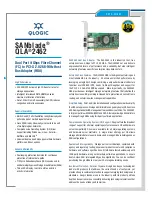
196 Managing administrative domains
•
For default accounts such as admin and user, the home Admin Domain defaults to AD0 and cannot be
changed.
•
The Admin Domain list for the default admin account is 0–255, which gives this account automatic
access to any Admin Domain as soon as the domain is created, and makes this account a physical
fabric administrator.
•
For user-defined accounts, the home Admin Domain also defaults to AD0 but an administrator can set
the home Admin Domain to any Admin Domain to which the account has been given access.
•
If you are in any Admin Domain context other than AD0, the Admin Domain number is included in the
system prompt displayed during your session. The following are examples of prompts when you are in
the AD0, AD1, and AD255 contexts, respectively:
switch:admin>
switch:AD1:admin>
switch:AD255:admin>
Admin Domain member types
You define an Admin Domain by identifying members of that domain. Admin Domain members can be
devices, switch ports, or switches. Defining these member types is similar to defining a traditional zone
member type. An Admin Domain does not have a new domain ID or management IP address linked to it.
Device members
Device members are defined by the device World Wide Name (WWN) and have the following properties:
•
Can be either a device port WWN or device node WWN
•
Grants view access to the device and zoning rights. View rights are also granted to the switch port to
which the device is attached.
•
Provides a pure virtual view. The cabling, switch port diagnostics, and control are managed by the
physical fabric administrator.
Port control is provided only through switch port membership and is not provided for device members.
When you create an Admin Domain, the end device members do not need to be online, even though their
WWNs are used in the Admin Domain definition.
You can share device members across multiple Admin Domains. You can also zone shared devices
differently in each Admin Domain. A device WWN member does not automatically grant usage of
corresponding
domain,index
members in the zone configuration. If you specify a device WWN member in
the Admin Domain member list, zone enforcement ignores zones with the corresponding port (the port to
which the device is connected) member usage.
Switch port members
Switch port members are defined by switch
domain,index
and have the following properties:
•
Grants port control rights and zoning rights for that switch port
•
Grants view access and zoning rights to the device connected to that switch port
•
Allows you to share
domain,index
members across multiple Admin Domains. In each Admin Domain,
you can also zone shared devices differently.
•
Implicitly includes all devices connected to the specified
domain,index
members in the Admin Domain
membership
•
Allows you to specify a range of indices as Admin Domain members. For example,
<D,[0-15]>
.
The
index range arguments are expanded and stored in the Admin Domain member list.
If a device is a member of an Admin Domain, the switch port to which the device is connected becomes an
indirect member of that Admin Domain and the
domain,index
is removed from the AD0 implicit
membership list.
Summary of Contents for A7533A - Brocade 4Gb SAN Switch Base
Page 1: ...HP StorageWorks Fabric OS 6 2 administrator guide Part number 5697 0016 Edition May 2009 ...
Page 24: ...24 ...
Page 99: ...Fabric OS 6 2 administrator guide 99 ...
Page 100: ...100 Managing user accounts ...
Page 118: ...116 Configuring standard security features ...
Page 164: ...162 Configuring advanced security features ...
Page 234: ...232 Installing and maintaining firmware ...
Page 268: ...266 Administering advanced zoning ...
Page 284: ...282 Configuring Enterprise class platforms ...
Page 292: ...290 Routing traffic ...
Page 294: ...292 Interoperability for merged SANs ...
Page 302: ...300 Configuring the Distributed Management Server ...
Page 334: ...332 iSCSI gateway service ...
Page 340: ...338 Administering NPIV ...
Page 407: ...Fabric OS 6 2 administrator guide 405 ...
Page 408: ...406 Using the FC FC routing service ...
Page 438: ...434 Administering extended fabrics ...
Page 460: ...456 Administering ISL trunking ...
Page 516: ...512 FICON fabrics ...
Page 526: ...522 Configuring and monitoring FICON Extension Services ...
Page 540: ...536 Configuring the PID format ...
Page 544: ...540 Understanding legacy password behavior ...
Page 546: ...542 Mixed fabric configurations for non merge SANs ...
Page 550: ...546 Migrating from an MP Router to a 400 MP Router ...
Page 558: ...554 Inband Management ...
Page 572: ...568 ...
















































